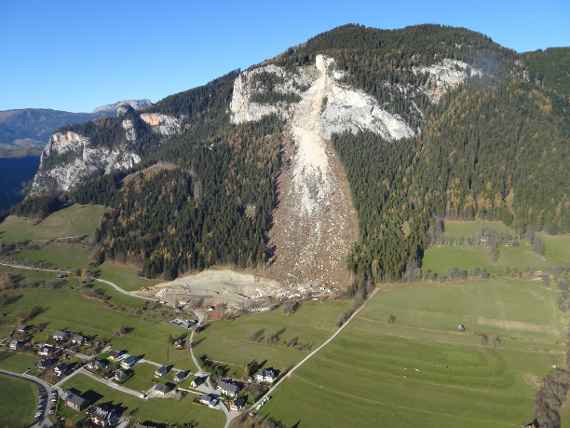Protection against natural hazards
The protection against natural hazards is therefore one of the most important security tasks of the state; the public investments in protective infrastructure are a service of public general interest.
Austria has an extensive and fully operational system of protection against natural hazards. According to the Federal Constitution the protection against natural events is a task of the Federal Government. At the Federal Ministry of Agriculture, Forestry, Regions and Water Management (BML) it is implemented by the competent technical departments - the Federal Water Engineering Authority (BWV) and the Service for Torrent and Avalanche Control (WLV).
Major local actors are the offices of the provincial governments, municipalities, water associations and water cooperatives. The measures include in particular technical protective infrastructures, protective forests and the Hazard Zone Mapping. These maps are an information about areas threatened by natural hazards that cannot or only to a limited extent be used as settlement or economic areas.
As a result of the impact of climate change the number of natural disasters tends to rise in Austria. In particular heavy local precipitation may cause even more extreme events that are difficult to predict. Drought, storms, forest fire or calamities by harmful insects create new risks and need for adaptation especially in protective forests. Sustainable development and investment in protective infrastructure as well as the management of protective forests are necessary to combat the growing vulnerability of human living space. Another very important aspect is the constant and intensive research of all those linkages between natural hazards, our living space and other current issues.
Protection against natural hazards - Total funds of 2019
Emergency measures to maintain the existing protective infrastructure and immediate disaster relief measures are of major significance. As a consequence of climate change both surface run-off and the amount of sediment transport by water bodies have increased. Mudflows and landslides occur more frequently. Therefore we not only take measures but also invest continuously in the development of the protection technology and innovative protection concepts.
Protective forests and avalanche control too have gained in importance in recent years. After "the" avalanche winter of 2019, the Federal Government adopted a special, 45 million euro package for avalanche control. The great need for action results from the increasing threat of extreme events with destructive effects on protective forests, like storm “Vaia” in October 2018.
Storm front “Vaia” in October 2018
The "Vaia" depression brought hurricane-like storms with peaks of over 200 kilometres per hour from northern Italy to the Tauern Mountains followed by record-breaking precipitation. The storm reached Austria in the evening of 29 October 2018 and caused severe damage in Eastern Tyrol, the Lesach Valley, Möll Valley, Drau Valley, Gail Valley as well as in the district of Völkermarkt (Carinthia). Numerous floods, landslides, damage on houses, infrastructure and properties and many windbreaks in forests occurred. The loss of the protective forest function has reached an extent unprecedented in Austria.
Damage in Carinthia and Eastern Tyrol
In Carinthia and Eastern Tyrol altogether about 4,300 hectares of forest area are affected by wind breakage with approximately 2 million cubic metres of damaged timber. More than 4,000 damage areas on over 3,000 forest properties were identified. In Carinthia about 1.5 million cubic metres of damaged wood accrued. Almost 59 percent of the damaged areas are located in areas with an inclination of more than 30 degrees. In Eastern Tyrol more than 600,000 cubic metres of damaged wood were produced. This is more than half of the amount of timber that used in Tyrol in the multi-annual average and three times the annual volume of timber harvested in Eastern Tyrol. 95 percent of the areas affected are protective forest.
Targeted measures can safeguard and significantly increase the resistance of domestic forests. In particular, owners of small forests need special support in the climate-adapted sustainable management of protective forests.

